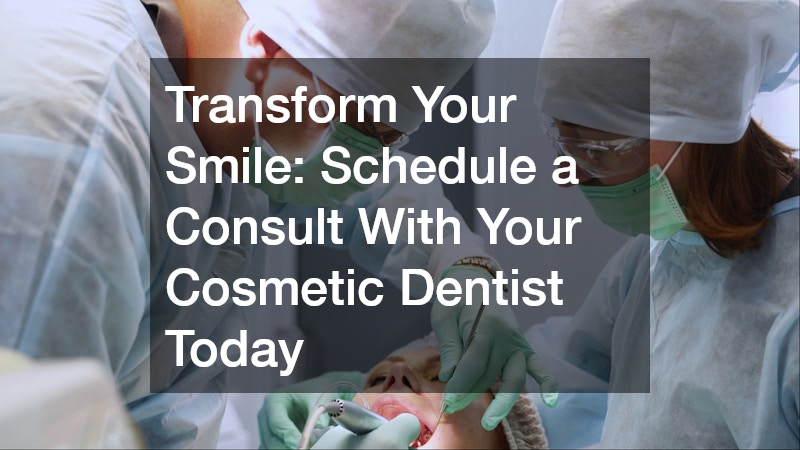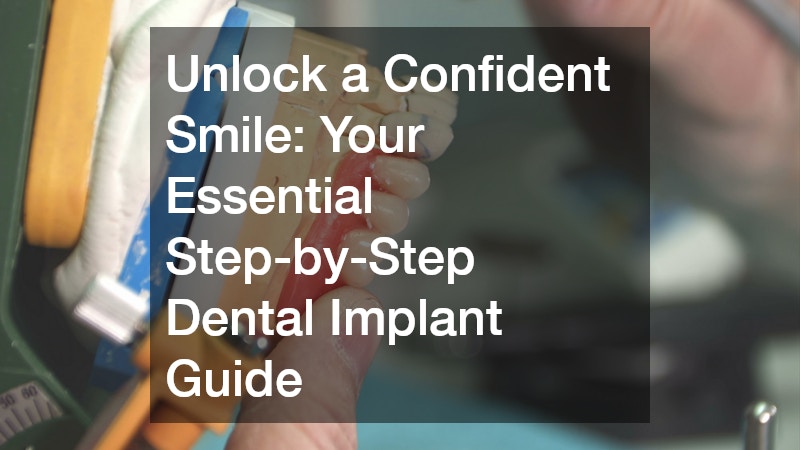Dental implants have emerged as a leading solution for those eager to restore their smiles and enhance their oral health. This guide will walk you through the dental implant process, equipping you with the knowledge you need to make informed choices. Together, you and your cosmetic dentist can achieve the confident smile you desire.
What are Dental Implants?
Definition and Components
Dental implants are artificial tooth roots crafted from biocompatible materials like titanium. They serve as robust anchors for replacement teeth, creating a reliable foundation for functionality.
The main components of dental implants include:
- Implant Fixture: Surgically placed into the jawbone for stability.
- Abutment: Connects the implant fixture to the custom-made crown.
- Crown: The visible part of the implant that resembles a natural tooth.
Advancements in dental technology have improved the effectiveness and accessibility of implants. Many patients report heightened confidence and improved quality of life after receiving dental implants, as they closely mimic the function and appearance of natural teeth.
Types of Dental Implants
There are several types of dental implants, each designed to meet specific needs and anatomical conditions:
- Endosteal Implants: The most common type, these are screws, cylinders, or blades placed directly into the jawbone.
- Subperiosteal Implants: Ideal for patients with minimal bone height, these implants rest on top of the jawbone beneath the gum tissue.
- Zygomatic Implants: Used for patients with severe bone loss, these are anchored in the cheekbone rather than the upper jaw.
Choosing the right type of implant is crucial and should be done in consultation with a qualified cosmetic dentist, who can recommend the best option based on your oral health and bone structure.
Benefits of Dental Implants
Dental implants provide numerous advantages:
- Durability: They are a long-lasting solution that can withstand normal eating and speaking.
- Bone Preservation: Implants integrate with the jawbone, preventing bone loss and preserving facial structure.
- Aesthetics: They closely resemble natural teeth in both appearance and function.
- Stability: Unlike dentures, implants do not slip or shift, enhancing comfort and confidence.
Beyond the physical benefits, dental implants can significantly improve psychological well-being. A confident smile can boost self-esteem and improve social interactions, encouraging a healthier and more fulfilling lifestyle.
Who is a Candidate for Dental Implants?
Ideal Candidate Characteristics
The ideal candidates for dental implants are those who:
- Maintain good oral hygiene.
- Have adequate bone density in the jaw.
- Possess healthy gum tissue free from periodontal disease.
- Are non-smokers or willing to quit, as smoking can hinder healing.
A comprehensive examination by a cosmetic dentist will evaluate these factors to determine eligibility for dental implants.
Medical Conditions and Considerations
Certain medical conditions can affect your suitability for dental implants, such as:
- Uncontrolled diabetes
- Cancer
- Autoimmune diseases
If you are undergoing treatment with bisphosphonates for bone diseases, discuss this with your cosmetic dentist as it may impact the healing process.
Integrating medical considerations into the planning process is vital for ensuring a favorable outcome tailored to individual needs.
Consultation and Evaluation Process
The first step toward obtaining dental implants is a thorough consultation and evaluation by a qualified cosmetic dentist. This process includes:
- Detailed examination of oral health
- Assessment of bone density and structure
- Discussion of medical history
Advanced imaging techniques like X-rays and CT scans may be used to develop a comprehensive treatment plan. During your consultation, communicate your goals and expectations to ensure a personalized approach.
What is the Dental Implant Procedure?
Pre-Procedure Preparation
Preparing for a dental implant involves several key steps:
- Consultations: Focus on customizing a treatment plan.
- Dietary Guidelines: Follow any specific recommendations leading up to surgery.
- Lifestyle Changes: This may include quitting smoking or starting prescribed medications.
Understanding the procedure and recovery timeline will help manage expectations and reduce anxiety.
Surgical Process and Recovery
The dental implant surgery consists of several precise steps:
- Anesthesia: Administered for comfort during the procedure.
- Implant Placement: The dentist creates an incision in the gum and drills a hole for the implant fixture.
- Healing: The gum is sutured to promote healing and integration with the jawbone.
Recovery typically takes several months, during which osseointegration occurs, allowing the implant to bond with the bone. Patients must follow post-operative care instructions carefully to facilitate healing.
Once healing is complete, a second procedure attaches the abutment, followed by fitting the crown, finalizing the implant process.
Post-Surgical Care and Maintenance
After surgery, diligent attention to oral hygiene is crucial for the success of dental implants. Key points include:
- Follow-Up Appointments: Regular visits to monitor healing and integration.
- Oral Hygiene: Adhere to your cosmetic dentist’s recommendations for cleaning around the surgical site.
- Long-Term Maintenance: Treat implants with the same care as natural teeth.
Investing in ongoing aftercare protects your dental implants and ensures long-lasting benefits.
A confident smile is attainable with dental implants, offering a durable and natural-looking solution for tooth replacement. By understanding the dental implant process, from types and costs to procedures and aftercare, you can embark on a journey towards a healthier and more confident you.



